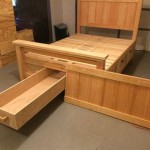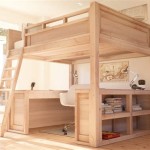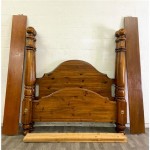How To Raise a Low Loft Bed
Loft beds offer a practical solution for maximizing space in smaller rooms, providing an elevated sleeping area that frees up floor space for other furniture or activities. However, a low loft bed might not offer sufficient under-bed clearance for desired uses like a comfortable seating area or a functional workspace. Raising a low loft bed can significantly improve its functionality and adapt it to evolving needs. This article discusses the methods and considerations involved in safely and effectively raising a loft bed.
Assessing the Loft Bed Structure
Before undertaking any modifications, it's crucial to thoroughly assess the structural integrity of the loft bed frame. Different designs exhibit varying weight capacities and construction methods. Examine the bed frame materials, joinery techniques (bolts, screws, welds), and overall stability. Identify any existing weaknesses or damage that might compromise the bed's stability after raising it. Consulting the manufacturer's guidelines or contacting them directly provides valuable information about the bed's intended use and limitations.
Determining the Desired Height Increase
Determining the desired additional height is an essential step in the planning process. Consider the intended use of the space underneath the bed. If the goal is to create a comfortable seating area, sufficient headroom is crucial. For a workspace, enough space to accommodate a desk and chair comfortably is necessary. Measure the height of furniture intended for placement under the bed and add a comfortable clearance margin to determine the required height increase.
Method 1: Using Bed Risers
Bed risers are a readily available and relatively simple method for increasing the height of a loft bed. These come in various materials, including wood, plastic, and metal, and in a range of heights. When selecting bed risers, prioritize sturdy construction and a weight capacity exceeding the combined weight of the bed frame, mattress, and anticipated load. Ensure the risers are designed for use with the specific leg type of the loft bed (round, square, etc.). Place the risers securely under each leg of the bed, ensuring even distribution of weight.
Method 2: Extending the Bed Posts
For more substantial height increases or for beds without traditional legs, extending the bed posts offers a more permanent solution. This method requires more advanced DIY skills and careful planning. Measure and cut extension pieces from material matching the existing bed posts in terms of strength and dimensions. Securely attach the extensions to the original posts using appropriate hardware, ensuring a stable and robust connection that maintains the bed's structural integrity. This may involve bolting, screwing, or welding, depending on the bed's existing construction and the chosen extension material.
Method 3: Building a Custom Support Structure
Building a custom support structure offers the most flexibility and allows for significant height adjustments. This method necessitates careful planning, accurate measurements, and appropriate carpentry skills. The support structure, typically constructed from sturdy lumber, is built to the desired height and designed to fit within the existing bed frame’s footprint. The loft bed frame then rests on this new structure. Ensure the support structure is designed to distribute the weight evenly and prevent instability. Consult structural guidelines for appropriate lumber dimensions and construction techniques.
Reinforcing the Bed Frame
Regardless of the chosen method, reinforcing the bed frame after raising it is essential to ensure continued stability and safety. This might involve adding cross bracing between the bed posts or reinforcing the joints with additional hardware. Check for any wobbling or instability after raising the bed and address any issues immediately. Regularly inspecting the bed frame, especially the modified areas, helps identify potential problems early.
Safety Considerations
Safety should be the paramount concern throughout the process of raising a loft bed. Ensure the modified bed meets all relevant safety standards. Test the stability of the raised bed thoroughly before use. Add a guardrail if necessary, especially if the raised height significantly increases the risk of falling. Avoid exceeding the manufacturer’s recommended weight limit for the bed, including the added weight of any modifications. If unsure about any aspect of the process, consult a qualified professional for advice and assistance.
:max_bytes(150000):strip_icc()/camp-loft-bed-58f6450a3df78ca159f3fc8f.jpg?strip=all)
14 Free Diy Loft Bed Plans For Kids And S
:max_bytes(150000):strip_icc()/Burtt-Childrens-Bedroom-5-261aa1a7d40348c5afbd4ff0e1fef8bd.jpeg?strip=all)
28 Loft Style Bedroom Ideas To Maximize Your Space
:max_bytes(150000):strip_icc()/B841E4B47C43367C7F005C3957922DC28050AC474012B226-5a38044db39d03003712a13d.jpg?strip=all)
14 Free Diy Loft Bed Plans For Kids And S

How To Diy A Loft Bed For S From Kura Kids Beds

Diy Elevator Bed For Tiny House Ana White

Diy Loft Bed Genius Bob Vila

Making A Diy Loft Bed With Desk Pro Tool Reviews

Diy Loft Bed How To Build Fixthisbuildthat
:max_bytes(150000):strip_icc()/593afa_69a22927df284f6fbf6aaec056bcfd07-d5a002cb15884383bce5c8428f1811da.jpeg?strip=all)
28 Loft Style Bedroom Ideas To Maximize Your Space

Camp Loft Bed With Stair Junior Height Ana White







